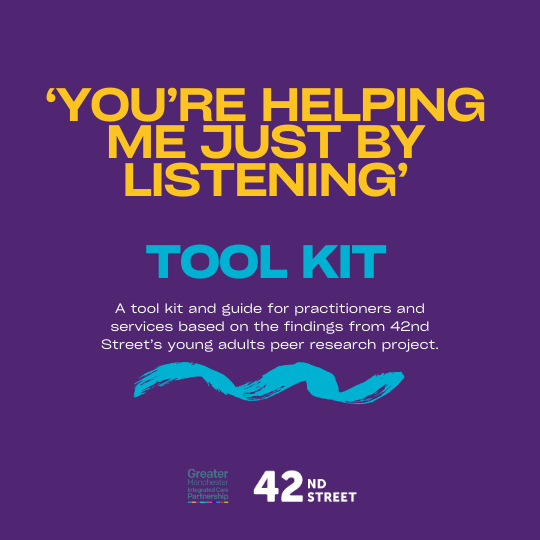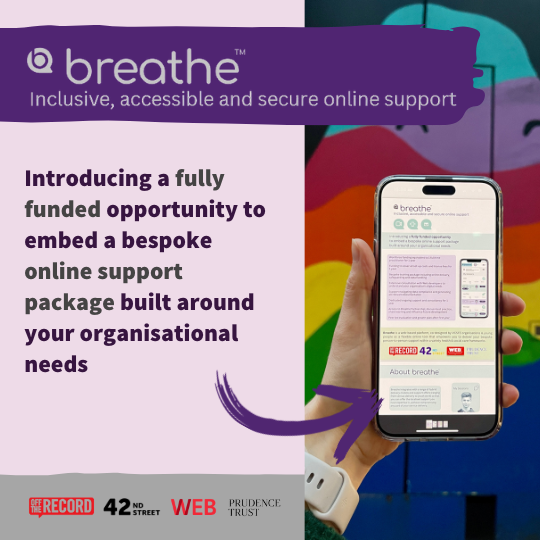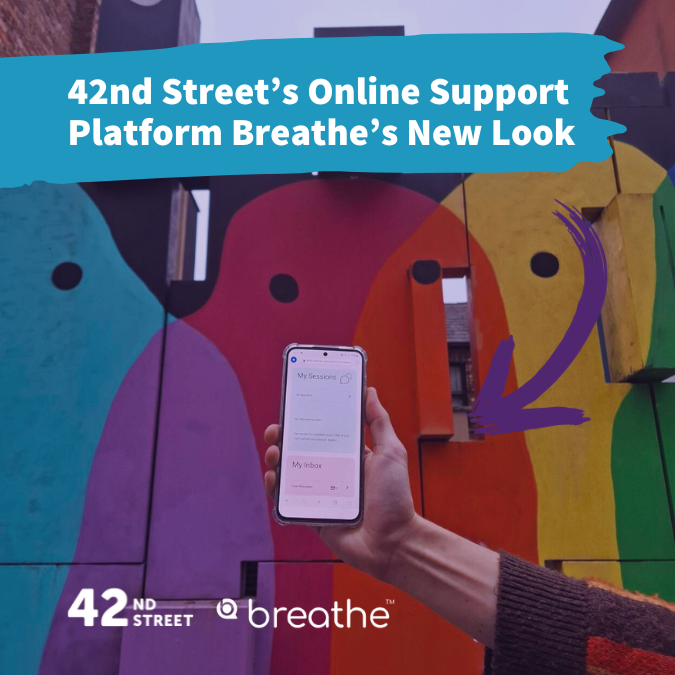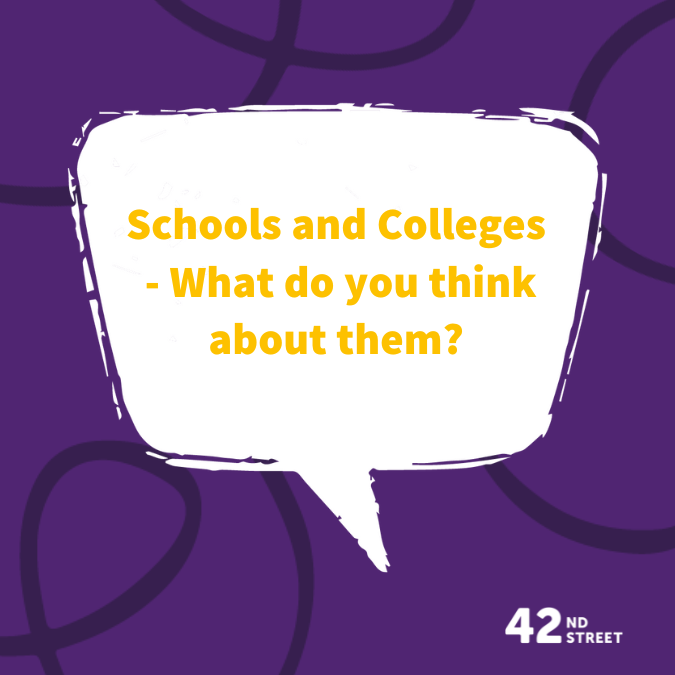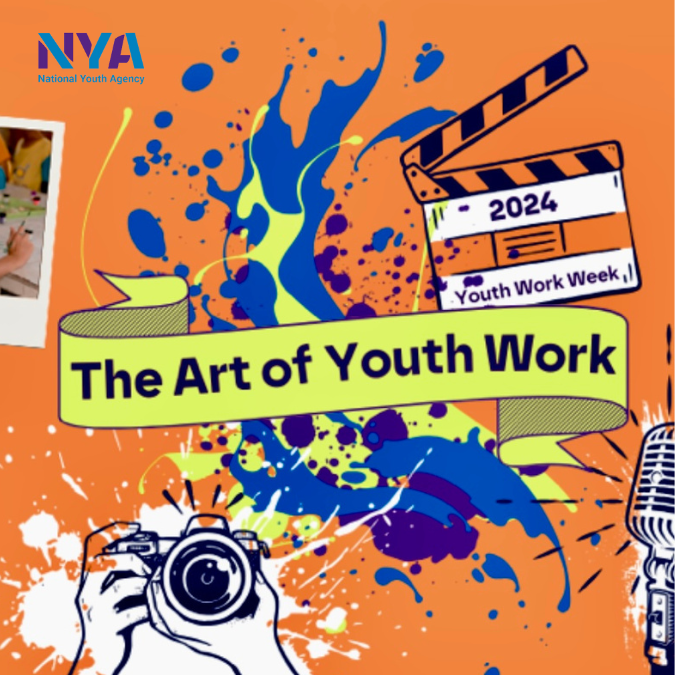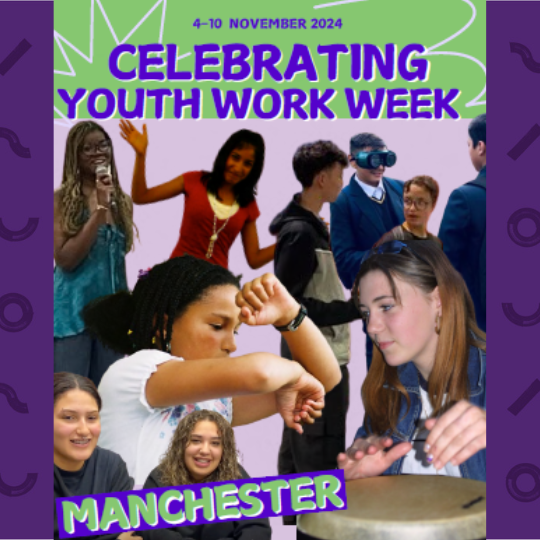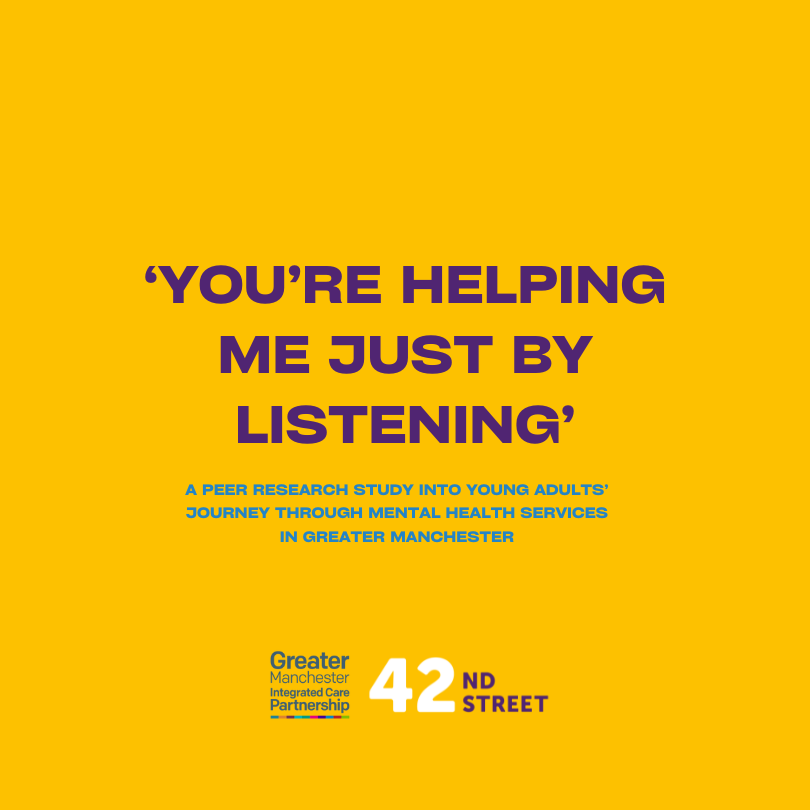Digital Connection
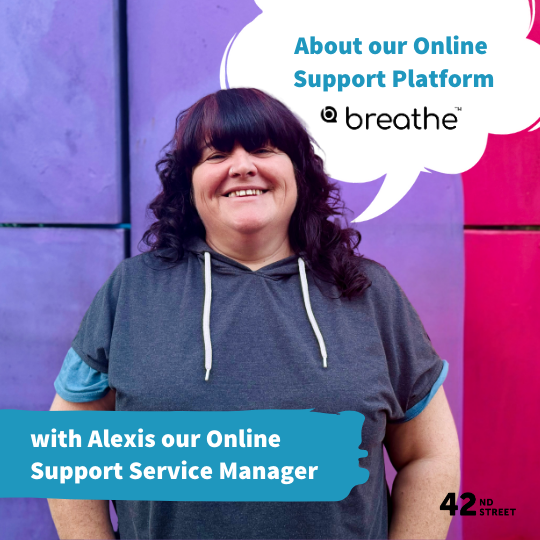
An interview with our Online Support Service Manager, Alexis.
We sat down for a chat with our Online Support Service Manager, Alexis to discuss the importance of having a robust and accessible online mental health support, what goes into its development, the most important considerations and the benefits to young people.
When was the online support offer first introduced at 42nd Street?
Alexis:
We started with a pilot project in 2018 - offering online (text-based) support to a very small number of young people in Salford. We broadened the offer, to be available to young people from across Greater Manchester early in 2020 (when I joined 42nd Street), just before the first national lockdown.
How has the online service been developed over the last couple of years? In which ways?
Alexis:
We've grown the team, internally, so we now have a group of experienced counsellors and psychosocial practitioners offering support online, using our Breathe platform. We've made updates to the Breathe platform including a new comprehensive referral form and we've been working on a new User Interface which should be ready to go in the next couple of months, it's going to make Breathe even easier to use, for young people, it has calmer colours and a brand new set pf super clear icons - we're really excited about it!
Why do you think it’s so important to have an online support service as part of your offer as a Mental Health Charity for Young People?
Alexis:
A lot of young people who've referred to access text-based support, using Breathe platform, have told us that they would not have chosen to access support in another way (like face to face or over the phone), for lots of different reasons. Offering online, text-based support means that more young people are able to come to our service for high quality support, delivered in a way that works best for them.
How is the online support service similar to face-to-face support and how does it differ?
Alexis:
42nd Street has a reputation for high quality 1-2-1 support and it's really important to us that we maintain that quality in the text-based way of working. Online Support accepts referrals from young people, themselves, only.
Our Online Support service is similar to face-to-face support because:
-
- it offers a 50-minute weekly support session, with the same worker
- you'll be asked to complete regular wellbeing questionnaires and reviews, to track your journey in support
- you'll be asked to commit to regular attendance at your sessions (as part of the agreement between you and your worker, at the start of your support)
- The big difference is that the sessions take place online, by text using Breathe platform. This means:
- you won't get to meet your worker face to face
- your worker won't know what you look like (unless you tell them or share a picture with them)
- you can have your sessions in a physical space that's comfortable for you (like your bedroom)
What kind of support can people access through the platform?
Alexis:
- Young people have two options:
- weekly live chats, with their worker (synchronous support) where they can chat live back & forth in a regular appointment
- messaging support (asynchronous support), which means they can leave as many messages for their worker, as they like, through the week and will receive one, longer reply from their worker on the same day, each week
Online workers are also really flexible, so young people can talk to them about trying a combination of live chat and messaging support, if they'd like to
How can the anonymity or perceived anonymity of online support, enable some young people to feel comfortable and able to share their experiences and work through them?
Alexis:
We aren't an anonymous service; we collect exactly the same information from young people who refer to us online as we do with referrals for other types of support. However, working online is known to offer a perceived anonymity which can create a phenomenon called "The Disinhibition Effect", and we do see this happening in support with young people. The Disinhibition effect means a client, feeling disinhibited, can disclose a great deal of information in the first 1 or 2 sessions of support - about themselves, their issues, their goals. This needs to be carefully managed, by the worker, but can accelerate progress in support and enable clients to achieve positive outcomes, more quickly.
Do you see any differences between young people accessing the online service and does it allow you to reach different communities of young people or young people of different demographics?
Alexis:
We receive referrals from a very broad range of young people, we do receive slightly higher numbers of online referrals from young people with global majority backgrounds and who identify as members of the LGBTQ+ communities
Were young people’s user feedback considered in the design of the online service when developing or testing it? (If yes, anything specific?)
Alexis:
Absolutely - for the original Online platform design we created a young people's group, which we called "Digital Pizza" - they met regularly, ate pizza and talked about what they would like from an Online 1-2-1 Support platform; so our platform was co-created by young people. We've consulted with young people on platform development, throughout this journey, and we will continue to do so. We now have a Peer Consultant on our team, this is a young person who will lead on research with (hopefully lots) of other young people to look at how we continue to develop our service, and Breathe platform, to best meet the needs of our service users.
How do you think an online service can stay relevant to the changing needs of young people as they evolve?
Alexis:
I think this is a really simple question - we keep listening to what young people tell us they need, we evolve and we adapt to meet those needs - on an ongoing basis.
Is there anything specific you have learnt from the development of the online service and what would you say are the most important things that organisations need to consider if they would like to add an online service to their offer so they can support more people?
Alexis:
Everything takes twice as long as you think it will. Things will go wrong with tech all the time, so having a robust risk management plan and really imaging every single thing that could go wrong makes a huge difference. Don't launch everything at once - start small, because there's always going to be something that got overlooked, no matter how thorough the planning was, and this gives you a chance to catch it.
Whilst a huge portion of skills (in 1-2-1 support) are transferable to online practice, there are also some very important nuances around text-based communication which must be considered and may require training
Spend lots of time with your team, informally, to get the best of sense of how they're finding a new way of working.
Make sure all the relevant data policies / compliance is in place.
How does the service address safeguarding, crises or emergencies online, where immediate intervention may be necessary?
Alexis:
Safeguarding online works much the same as it does, for young people who receive support face to face. We collect young people's addresses, phone numbers, GP details and emergency contact details at the point of referral.
If we are concerned that someone is at risk of serious harm, we will do our best to contact the young person directly to talk through our concerns and to agree a plan of action, if needed.
At times when we are unable to get in contact with a young person directly, we would use their emergency contact details or GP information to share those concerns and check on safety.
Where we might have immediate concerns, we would ask the emergency services to check on someone's safety using all the contact information we have.
Are there any new developments coming to the online support platform? Can we expect any new developments soon?
Alexis:
The Breathe platform will be getting a new look this week; we've made quite a few changes responding to feedback from young people that makes it easier to use and nicer to look at. We're really excited to hear what young people think of the new Breathe User Interface!
Is there any other exciting news to share about the online platform?
Alexis:
We're currently looking for new partners to join us; we're inviting small VCSFE organisations from across the UK to develop their own Online Support Service using Breathe in a fully funded opportunity for 1 year. This will include training and support in all aspects of developing their Online Service, from 42nd Street. This means that text-based and video support using Breathe will be available to lots more young people, and not just in Greater Manchester!




